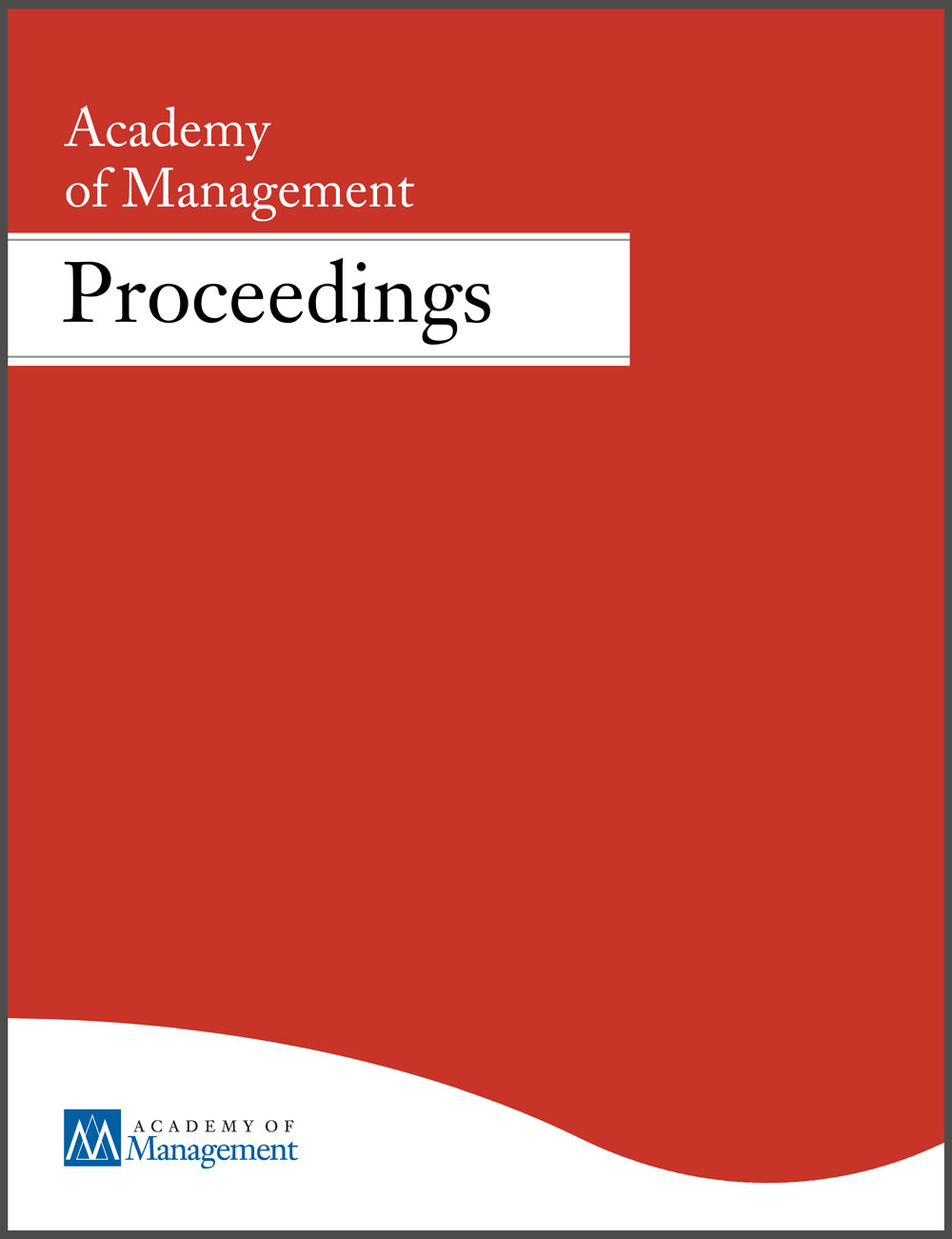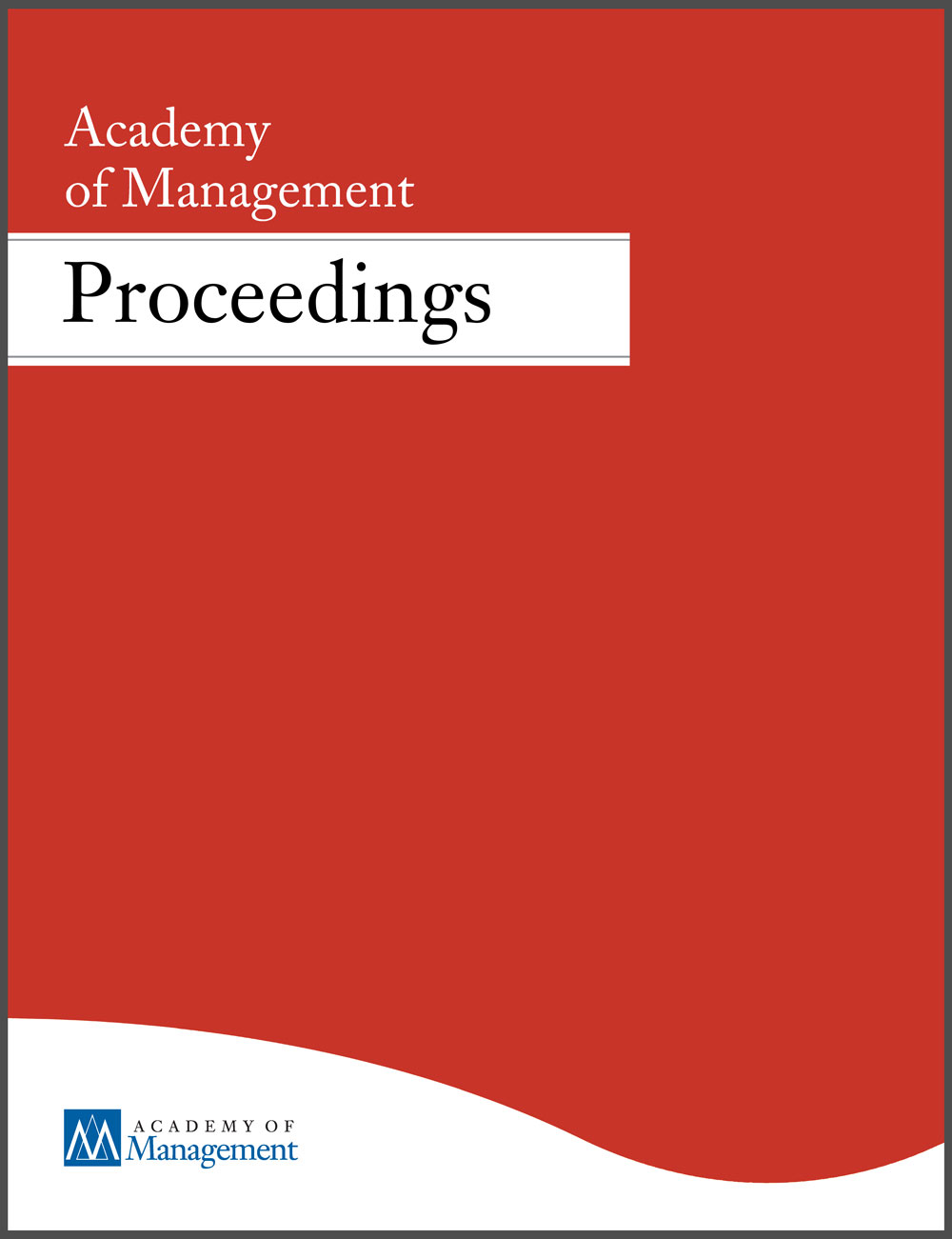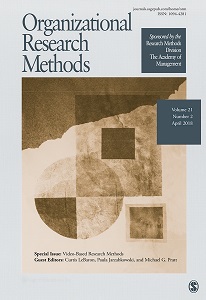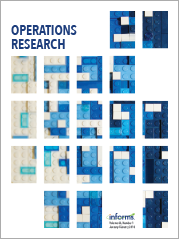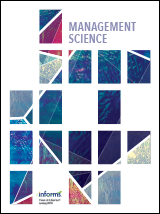Academic articles
Practitioner articles
Working papers
Books
Book chapters
Case studies
Other publications
Subject(s)
Strategy and general management; Technology, R&D management
Social network research has made considerable progress in understanding how certain network structures emerge and the extent to which they affect outcomes such as innovation or organizational performance. In recent years, however, scholars have agreed that we also need to have a better understanding of the relational content that flows through network ties. In this symposium, we attempt to push network research forward by incorporating network content into our current understanding, especially how the content of network ties is narrated by social actors. This symposium aims to encourage fruitful discussion among organizational scholars on the extent to which studying the narrative of network tie content extends our knowledge of the impact of network structures.
With permission of the Academy of Management
Volume
2022
ISSN (Online)
2151-6561
ISSN (Print)
0065-0668
Subject(s)
Human resources management/organizational behavior; Strategy and general management; Technology, R&D management
Keyword(s)
interfirm mobility, brokerage, brokers, patents, innovative performance
Extant literature on social capital has demonstrated the positive effects of brokerage on employee productivity, particularly in knowledge-intensive and creative environments. Yet, little is known about the interactions between employee brokerage and employee mobility to competitors, another common theme in the strategic human capital literature. We posit that employees in brokerage positions face unique information and exposure and have different external opportunities than their peers in more constrained network positions. However, as brokerage is an inherently local network position, we further argue that the effect of mobility on employee productivity is substantially different for those in brokerage positions versus those in constrained networks. Moreover, the nature of these consequences is contingent on the breadth of expertise of employees. Using a large, longitudinal sample of inventors working for the world’s major pharmaceutical firms, we find partial support for the interactive effects of brokerage, mobility, and productivity. The findings of this study contribute to the social capital literature on employee brokerage and to strategic human capital research on inventor mobility.
With permission of the Academy of Management
Volume
2022
ISSN (Online)
2151-6561
ISSN (Print)
0065-0668
Subject(s)
Management sciences, decision sciences and quantitative methods
Keyword(s)
Brokering process, behavioral measure, relational events sequences, network algebra
Extant research in organizational networks has provided critical insights into understanding the benefits of occupying a brokerage position. More recently, researchers have moved beyond the brokerage position to consider the brokering processes (arbitration and collaboration) brokers engage in and their implications for performance. However, brokering processes are typically measured using scales that reflect individuals’ orientation toward engaging in a behavior, rather than the behavior itself. In this article, we propose a measure that captures the behavioral process of brokering. The measure indicates the extent to which actors engage in arbitration versus collaboration based on sequences of time stamped relational events, such as emails, message boards, and recordings of meetings. We demonstrate the validity of our measure as well as its predictive ability. By leveraging the temporal information inherent in sequences of relational events, our behavioral measure of brokering creates opportunities for researchers to explore the dynamics of brokerage and their impact on individuals, and also paves the way for a systematic examination of the temporal dynamics of networks.
With permission of SAGE Publishing
Volume
25
Journal Pages
459–489
Subject(s)
Human resources management/organizational behavior
Keyword(s)
Boundary spanning, supervisor undermining, territoriality, advice seeking
JEL Code(s)
M12
Volume
107
Journal Pages
1009–1019
Subject(s)
Management sciences, decision sciences and quantitative methods
Keyword(s)
Sequential decision making, time pressure, information search, Bayesian inference
Arrow et al. (1949) introduced the first sequential search problem, “where at each stage the options available are to stop and take a definite action or to continue sampling for more information." We study how time pressure in the form of task accumulation may affect this decision problem. To that end, we consider a search problem where the decision maker (DM) faces a stream of random decision tasks to be treated one at a time, and accumulate when not attended to. We formulate the problem of managing this form of pressure as a Partially Observable Markov Decision Process, and characterize the corresponding optimal policy. We find that the DM needs to alleviate this pressure very differently depending on how the search on the current task has unfolded thus far. As the search progresses, the DM is less and less willing to sustain high levels of workloads in the beginning and end of the search, but actually increases the maximum workload she is willing to handle in the middle of the process. The DM manages this workload by first making a priori decisions to release some accumulated tasks, and later by aborting the current search and deciding based on her updated belief. This novel search strategy critically depends on the DM's prior belief about the tasks, and stems, in part, from an effect related to the decision ambivalence. These findings are robust to various extensions of our basic set-up.
© 2019, INFORMS
Volume
70
Journal Pages
1293–1952
Subject(s)
Management sciences, decision sciences and quantitative methods; Technology, R&D management
Keyword(s)
decertification, innovation, quality management, standards
JEL Code(s)
L15, O32, L25.
View all ESMT Working Papers in the ESMT Working Paper Series here. ESMT Working Papers are also available via RePEc, EconStor, and the German National Library (DNB).
Pages
54
ISSN (Print)
1866–3494
Subject(s)
Economics, politics and business environment; Management sciences, decision sciences and quantitative methods
Keyword(s)
subjective probability, choice under uncertainty, online experiments
JEL Code(s)
D01, D81, D84, C09
Anscombe & Aumann (1963) offer a definition of subjective probability in terms of comparisons with objective probabilities. That definition - which has provided the basis for much of the succeeding work on subjective probability - presumes that the subjective probability of an event is independent of the prize consequences of that event, a property we term Prize Independence. We design experiments to test Prize Independence and find that a large fraction of our subjects violate it; thus, they do not have subjective probabilities. These findings raise questions about the empirical relevance of much of the literature on subjective probability.
View all ESMT Working Papers in the ESMT Working Paper Series here. ESMT Working Papers are also available via RePEc, EconStor, and the German National Library (DNB).
Pages
49
ISSN (Print)
1866–3494
Subject(s)
Management sciences, decision sciences and quantitative methods; Strategy and general management
Keyword(s)
deep learning, nlp, transformers, leadership, semantic networks, distributed representations
JEL Code(s)
C45, D7, D85
This dissertation proposes methods that bridge network science, machine-learning, and agent-based simulations to infer information about context-dependent relationships. The methods are applied to analyze and understand the roles and actions associated with organizational leadership. Findings indicate, among other things, that effective leadership, both as found in practice and in theory, may be more authoritative and hierarchical than is commonly asserted.
Journal Pages
156
Subject(s)
Human resources management/organizational behavior
Keyword(s)
Employer attractiveness, organizational commitment, current employees, existing employees, employer brand
JEL Code(s)
M12
With the growing interest in employer attractiveness, research is unsystematic on how this phenomenon can be conceptualized and studied. Studies tend to make little conceptual differentiation regarding for whom employers should be attractive, and therefore, address the perspectives of potential as well as current employees, who work in organizations for long periods of time. In this study our arguments relate to the phenomenon’s conceptual clarity as well as its differentiation from other related concepts. By focusing on employer attractiveness for current employees, we have systematically reviewed 48 studies published in business and management journals, and categorized findings into the Inputs-Mediators-Outputs model. This approach allowed us to depict significant limitations in the existing knowledge about employer attractiveness from the current employees’ perspective, and offer avenues for future research. Next, to delineate the future research agenda, we have concluded this study with a discussion on what our findings mean for managers and organizations.
© 2022 Dassler, Khapova, Lysova and Korotov
Volume
13
Keyword(s)
hedge funds, cash flows, hot hand fallacy, performance streaks, relative weights, smart money
Cash flows to hedge funds are highly sensitive to performance streaks, a streak being defined as subsequent quarters during which a fund performs above or below a benchmark, even after controlling for a wide range of common performance measures. At the same time, streaks have limited predictive power regarding future fund performance. This suggests investors weigh information suboptimally, and their decisions are driven too strongly by a belief in continuation of good performance, consistent with the “hot hand fallacy.” The hedge funds that investors choose to invest in do not perform significantly better than those they divest from. These findings are consistent with overreaction to certain types of information and do not support the notion that sophisticated investors have superior information or superior information processing abilities.
© 2021, INFORMS
Volume
68
Journal Pages
4151–4172
ISSN (Online)
1526-5501
ISSN (Print)
0025–1909

